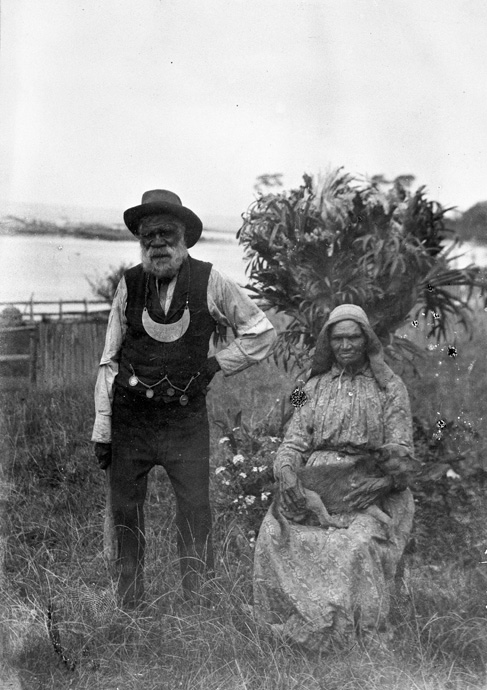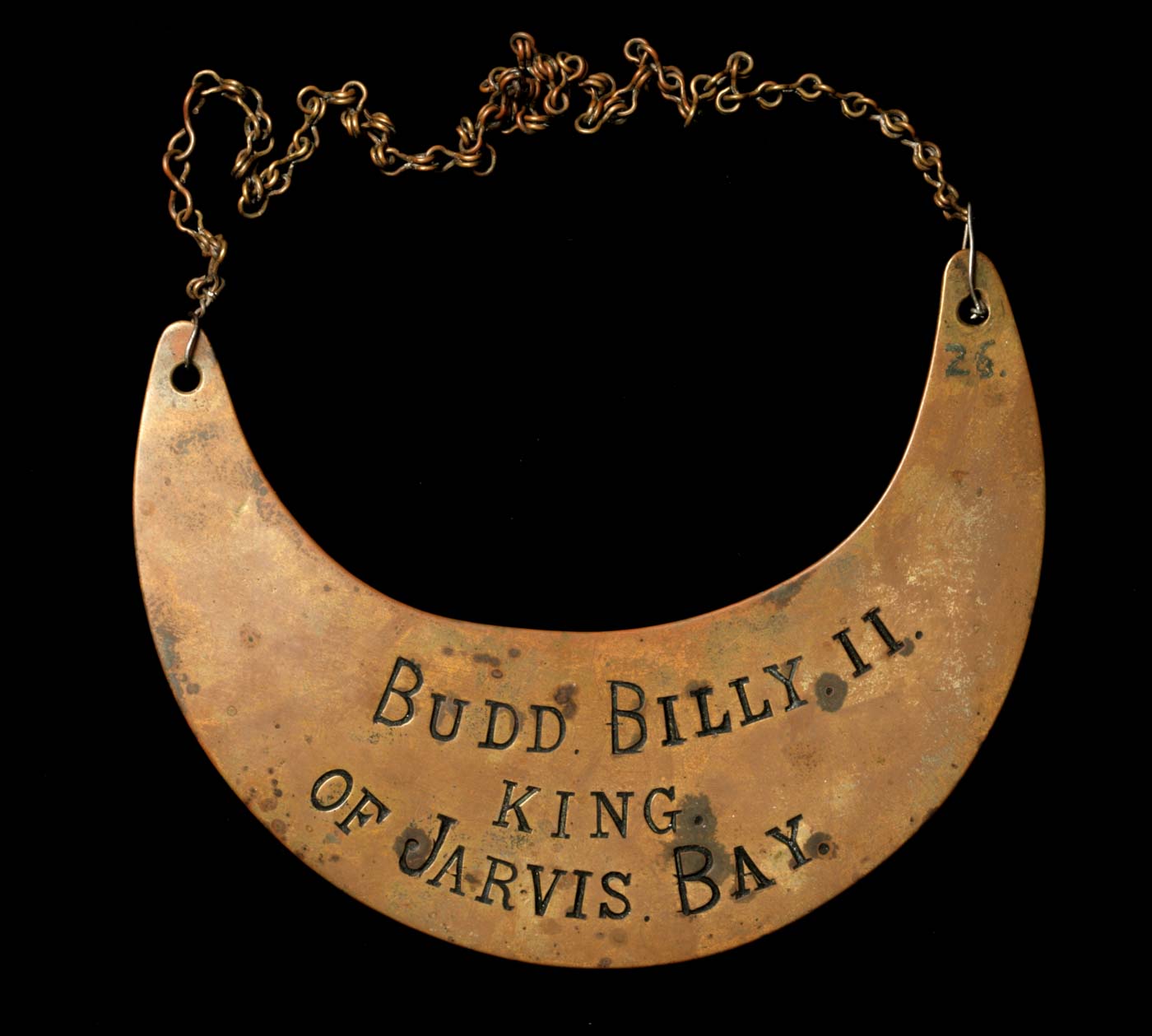King of Jarvis Bay
This is a simple brass gorget with only an inscription for embellishment. However, it is notable because it is the only gorget from the Museum’s collection for which there is a known photograph of it being worn by the person to whom it was presented.

In a rustic setting, Budd Billy strikes a semi-formal pose beside his seated wife, Mary Carpenter, both of whom are smartly dressed.
Budd Billy holds a club and his wife nurses her dog on her lap. Billy wears his gorget on a chain around his neck and a medallioned fob chain pinned either side of his vest with safety pins.
Edmund Milne, who collected Budd Billy’s gorget, pasted the photograph into his album with the caption, ‘Budd Billy’ and his Wangan/Last King and Queen of Jervis Bay 1904′. [1]
The name ‘Budd Billy’ is an Anglicisation of budbili meaning ‘possum-skin rug’. The word was part of the vocabulary of the Sydney language [2 and 3], and probably other coastal New South Wales languages.
The word also entered the vocabulary of New South Wales Pidgin which became an Australia-wide language in the 19th century. [4 and 5]
Footnotes
[1] EO Milne, Edmund O Milne’s photograph album, National Museum of Australia, Milne Library item No. 11, nd.
[2] J Troy, The Sydney Language, the author, Canberra, 1993.
[3] J Troy, ‘The Sydney Language’ in McGregor, W (ed.), Macquarie Aboriginal Words: a dictionary of words from Australian Aboriginal and Torres Strait Islander languages, Macquarie Library, Sydney, 1994.
[4] J Troy, ‘Australian Aboriginal Contact with the English Language in New South Wales: 1788-1845’, Pacific Linguistics, B-103, 1990.
[5] J Troy, ‘Melaleuka: a History and Description of New South Wales Pidgin’, PhD thesis, Australian National University, 1995.
